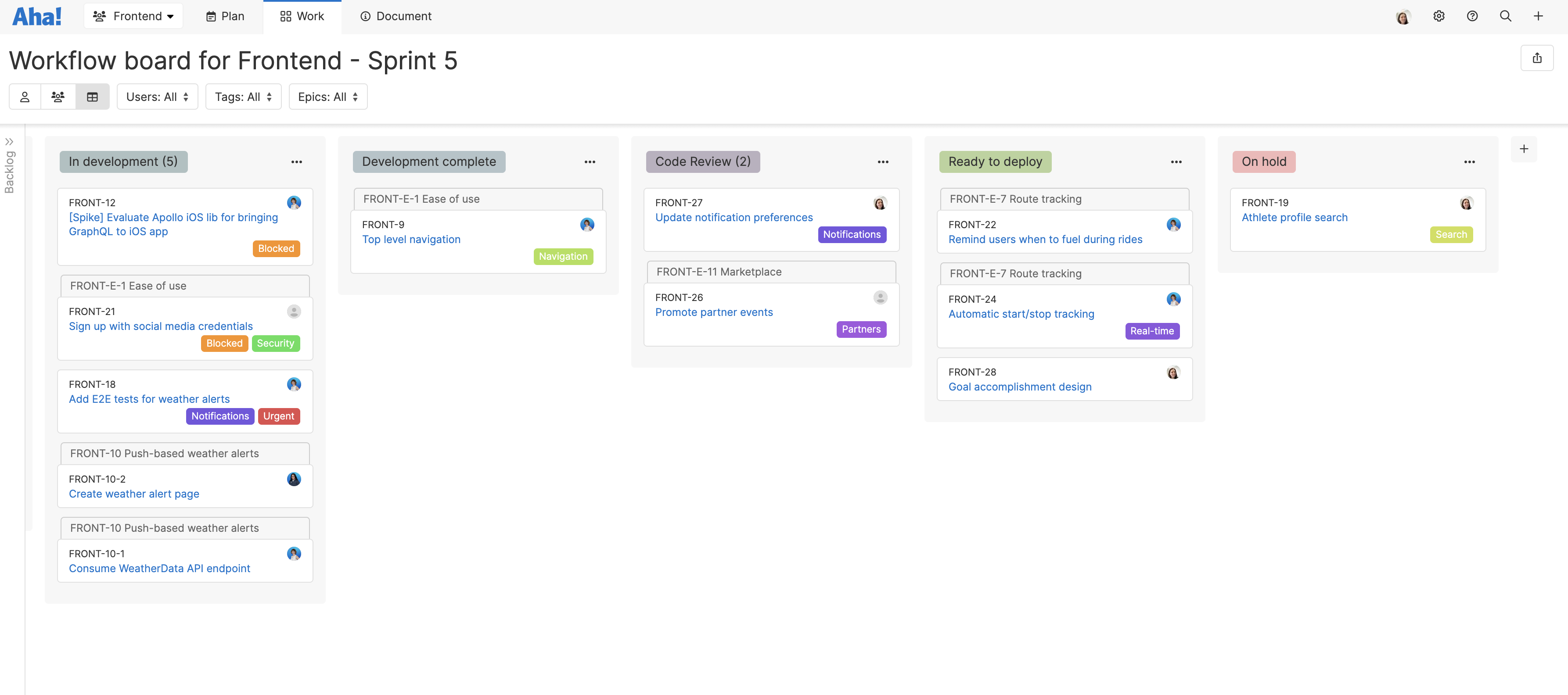
Why Kanban Alone Is Never Enough for Product Development
Last updated: February 2024
There is a growing trend. I hear about it on a daily basis. Product teams implementing kanban-style boards to speed up innovation and improve their development process. But many of them quickly realize they have made a mistake.
Product teams move to using kanban out of good intent — they want to get software shipped and keep product and engineering moving forward. They need a great tool to help them visualize who is doing what work and keep teams aligned on building what matters. That sounds like a great goal.
Can you blame them?
If you have adopted kanban for software development, you have probably also done so for nearly identical reasons. But there is something critical missing that will cause problems later if you do not stop and address it now.
All great products begin with answering the "why." Kanban only helps with the "how." If you do not know where your product is going, it will be difficult to achieve your goals.
To take your product to the next level, you must connect your daily work to your higher-level product strategy. Otherwise, you can easily build yourself to nowhere by working on the wrong initiatives.
Here are four areas where kanban alone fails:
Strategy
Kanban is not a strategic tool — it is tactical. Creating lists of tasks along with their status helps you focus on what is in front, but it fails to help you think about the bigger picture. You are constantly in an urgent state moving forward. As a product manager you must be able to think strategically and work tactically.
Motivation
To keep employees motivated they need to be able to see the big picture. And as a manager, it is your job to be able to show them how their work connects to larger goals and initiatives. It gives them a feeling of substance.
Scale
A kanban board will keep work flowing, but it does not scale as the team grows. That is because it’s difficult to keep everyone aligned and motivated when they are head down worrying about the constant status of each item.
Innovation
Great products are made up of great features, and features are much more than just a list of tasks and status updates. Driving real innovation is a complex process that involves adaptation, cross-functional alignment, and feature prioritization — all of which are next to impossible with a one-dimensional board.
When used as part of a more strategic framework, kanban can be great. The danger comes when kanban is used in isolation.
That’s why Aha! Roadmaps and Aha! Develop include kanban boards that are tightly integrated with the rest of the strategic product planning process. It is a unified way to bring strategy, ideas, releases, and features to life.
 Now you can link each kanban project that you work on to the high-level goals and initiatives that you are working towards. This process helps you think critically about what you are working on — and give honest assessments.
Now you can link each kanban project that you work on to the high-level goals and initiatives that you are working towards. This process helps you think critically about what you are working on — and give honest assessments.
If your team practices kanban, you should not have to give it up. But know that there is a more effective way to use it.
When thinking of the best tools to bring products to life, you should always look for the most holistic approach — one that uses frameworks to implement high level strategy.
Without a product vision and roadmap to guide your workflow, your team’s productivity will suffer. But when you combine kanban with strategy, you get work done and build what matters. For a product manager, there is no better feeling.




